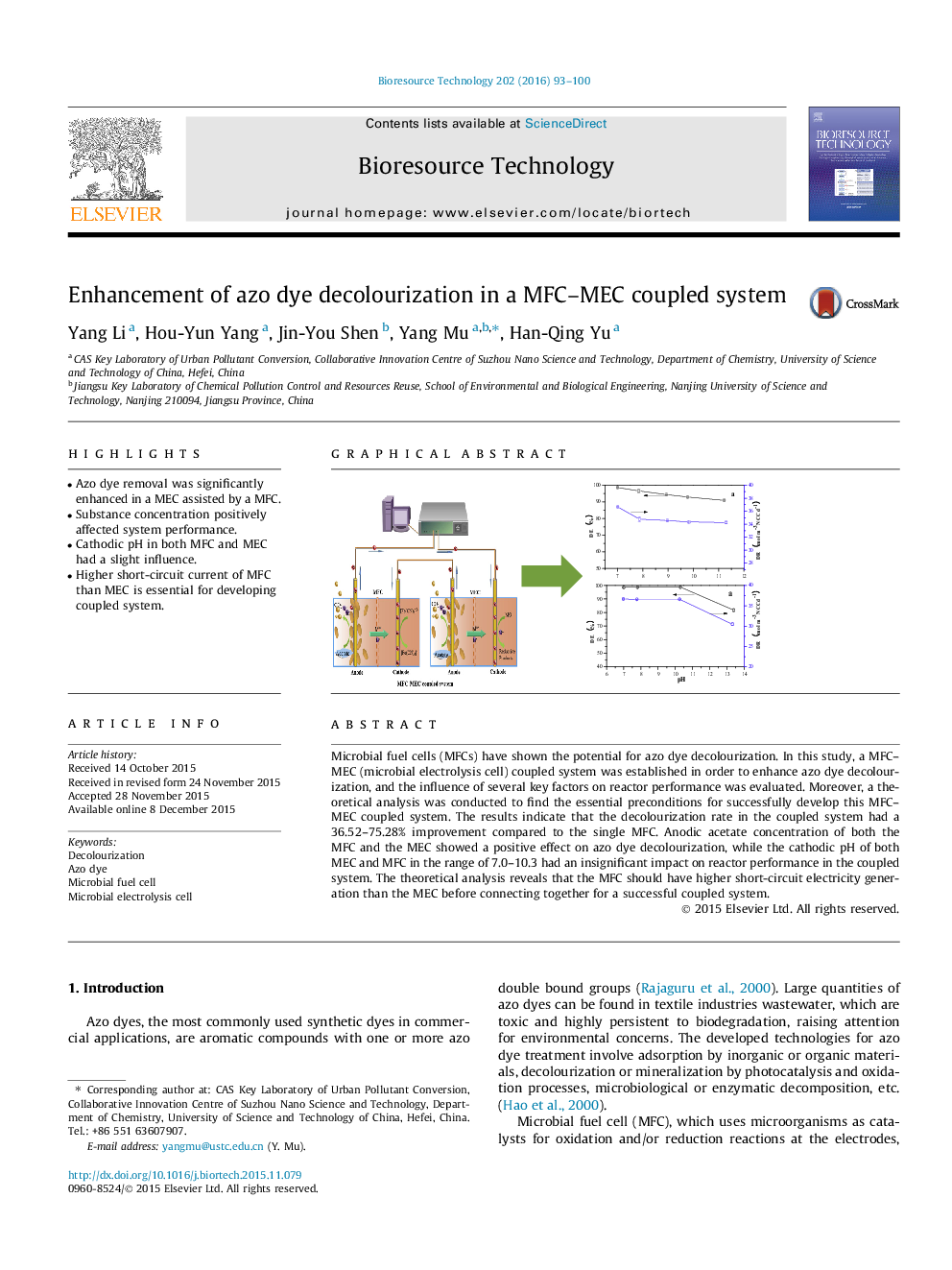| کد مقاله | کد نشریه | سال انتشار | مقاله انگلیسی | نسخه تمام متن |
|---|---|---|---|---|
| 679298 | 1459941 | 2016 | 8 صفحه PDF | دانلود رایگان |
• Azo dye removal was significantly enhanced in a MEC assisted by a MFC.
• Substance concentration positively affected system performance.
• Cathodic pH in both MFC and MEC had a slight influence.
• Higher short-circuit current of MFC than MEC is essential for developing coupled system.
Microbial fuel cells (MFCs) have shown the potential for azo dye decolourization. In this study, a MFC–MEC (microbial electrolysis cell) coupled system was established in order to enhance azo dye decolourization, and the influence of several key factors on reactor performance was evaluated. Moreover, a theoretical analysis was conducted to find the essential preconditions for successfully develop this MFC–MEC coupled system. The results indicate that the decolourization rate in the coupled system had a 36.52–75.28% improvement compared to the single MFC. Anodic acetate concentration of both the MFC and the MEC showed a positive effect on azo dye decolourization, while the cathodic pH of both MEC and MFC in the range of 7.0–10.3 had an insignificant impact on reactor performance in the coupled system. The theoretical analysis reveals that the MFC should have higher short-circuit electricity generation than the MEC before connecting together for a successful coupled system.
Figure optionsDownload as PowerPoint slide
Journal: Bioresource Technology - Volume 202, February 2016, Pages 93–100
